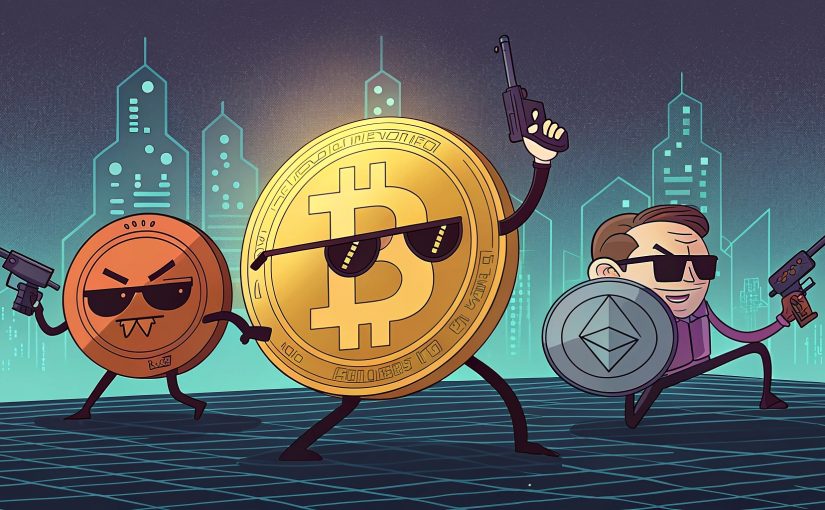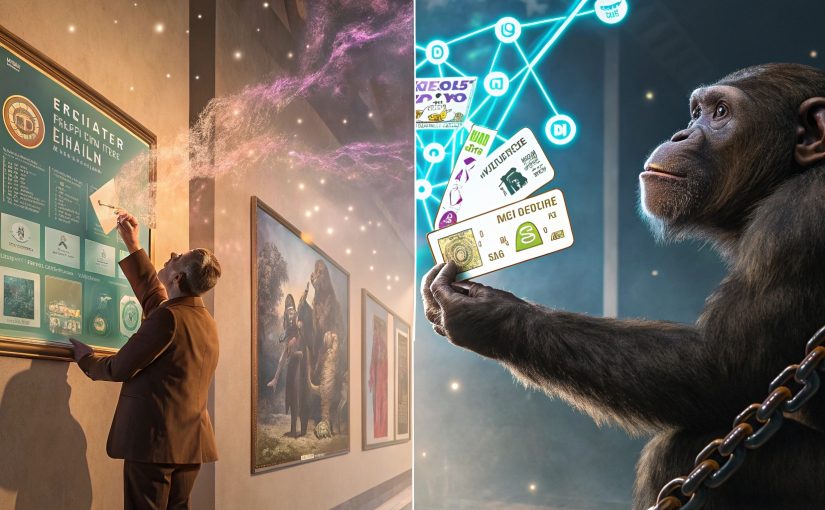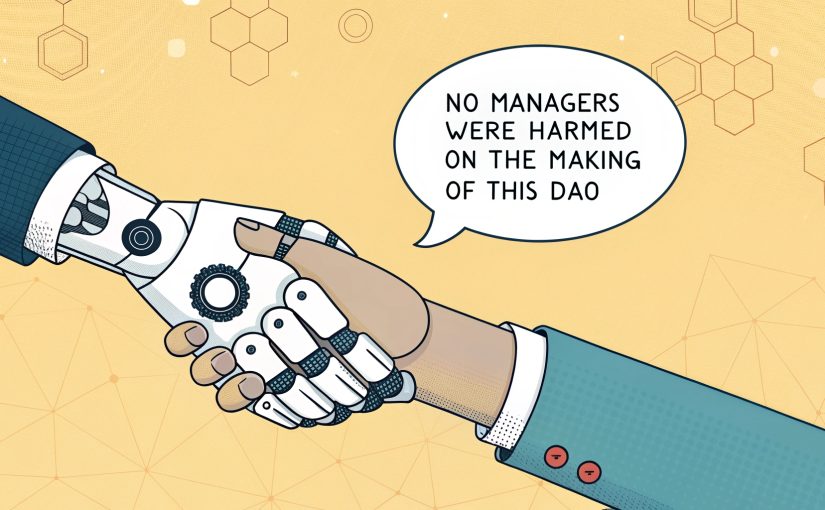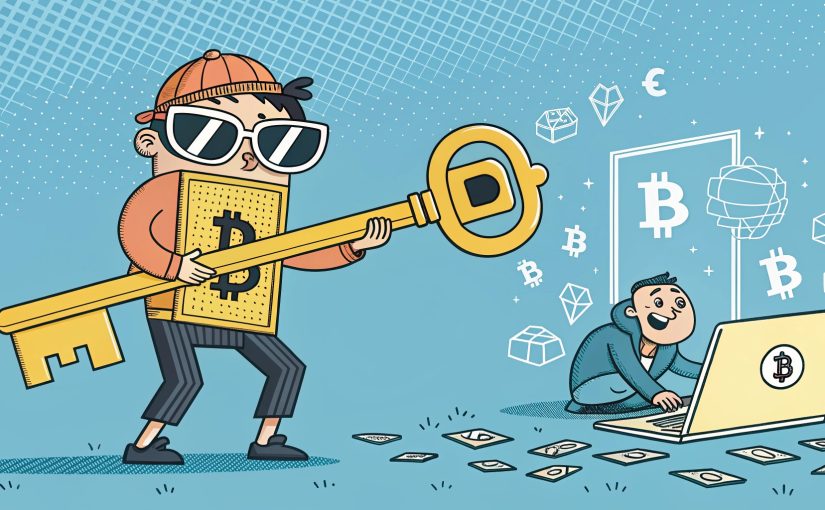Introduction
Remember buying Bitcoin by meeting strangers at coffee shops? Or hunting through sketchy forums to set up bank transfers? Those were the wild early days. The first real crypto exchanges popped up around 2010. They were super basic. Just match buyers with sellers. That’s all they did.
Why did we even need these platforms? Think about it. How do you buy something that only exists digitally without someone in the middle? You can’t just send money to random internet people. Too many scammers. Zero protection.
Did you know Mt. Gox handled over 70% of all Bitcoin trades at its peak? That’s nuts. Like one stock exchange running most of the world’s trades.
What happened next makes sense. As Bitcoin jumped from pennies to hundreds of dollars, people wanted more features. It’s just like when we got bored with flip phones and suddenly needed smartphones. Same thing happened with exchanges, but way faster.
That’s what we’ll look at today. How did we go from basic trading sites to these massive financial hubs? We’ll see how exchanges added margin trading, futures, and bank-like services. We’ll check out decentralized exchanges too. Then we’ll guess what comes next for these critical platforms.
Let’s dig in.
From Basic Trading to Advanced Features
Early Exchanges: Simple Trading
The first crypto exchanges were basically digital bulletin boards. BitcoinMarket.com and Mt. Gox just matched buyers with sellers. No fancy charts. No options. No apps. Just a list of orders sorted by price.
It was like trading baseball cards at school. You list what you have. Someone says what they want. If prices match, you trade.
Why so basic? Not because the developers were lazy. Bitcoin was brand new – created in 2009. Nobody knew if it would last a week. Building complex trading tools seemed pointless for what might be a fad.
These platforms only offered spot trading. You buy or sell the actual asset now. No complications. Daily trading back then was tiny – under $1 million across all exchanges. Today we see over $50 billion daily.
And security? It was awful. Mt. Gox lost about 850,000 Bitcoin in their famous hack. Worth $450 million then. Over $40 billion today. Like losing a small country’s entire economy.
The Rise of Margin Trading
Around 2013, as users got more sophisticated (and greedy), exchanges started offering margin trading. This means trading with borrowed money.
It’s like buying a house with a mortgage instead of cash. Put down 20%, borrow the rest. If house prices go up 10%, you don’t make 10% – you make 50% on your initial money.
Bitfinex led the way, letting users leverage up to 3.3x at first. So $1,000 could control $3,300 worth of crypto. Sounds great when prices rise.
Why did exchanges add this? Not just to help traders. Exchanges made a killing from it. They earned interest on loans, collected more fees from bigger trades, and created busier markets. When Bitfinex launched margin trading, their volume jumped 85% in just three months.
But margin trading is super risky. Market moves against you? Your losses multiply just like gains do. In crypto, where prices can swing 20% daily, this created huge problems. During the March 2020 crash, over $1 billion in margin positions got wiped out in 24 hours. That’s billion with a B.
Futures and Options: Expanding Markets
By 2017, as crypto grew up and big institutions got interested, exchanges added even fancier tools: futures and options.
Futures let you buy or sell crypto at a set price on a future date. Why bother? Not just for gambling. Businesses use futures to protect against price swings.
It’s like owning an ice cream shop and locking in summer sugar prices. In crypto, miners might sell Bitcoin futures to guarantee prices for coins they’ll mine later.
BitMEX changed everything with perpetual futures contracts – futures that never expire. Within two years, they hit $10 billion in daily trades. More than many stock exchanges.
Options came next. They give you the right (but not obligation) to buy or sell at a set price. Like insurance for your trades. The CME launched Bitcoin options in January 2020. Within a year, daily volume went from zero to over $100 million.
What happened because of these new tools? The crypto market became more liquid, more efficient, and more welcoming to Wall Street types. But also more complex and riskier for newbies.
The Growth of DeFi and Decentralized Exchanges (DEXs)
Around 2018-2020, something cool emerged. While regular exchanges added traditional finance features, a new movement grew: decentralized finance (DeFi) and decentralized exchanges (DEXs).
What’s a DEX? Imagine trading directly with another person. No company in the middle holding your money. DEXs use smart contracts to let people trade peer-to-peer right on the blockchain.
You might think DEXs caught on because they were better technology. Nope. They were clunky and expensive at first. The real reason was philosophy. Crypto fans value controlling their own money. Too many exchange hacks taught hard lessons about trusting others with your coins.
Uniswap, launched in 2018, changed the game with their automated market maker model. Instead of order books, they used liquidity pools where users deposit assets and earn fees. By January 2021, Uniswap handled over $1 billion daily – about 50 times more than a year earlier.
It’s like when Uber replaced taxis. Suddenly anyone could join the market, not just professionals. DEXs let anyone become a market maker and earn fees.
DeFi went beyond just trading. By mid-2020, users could lend, borrow, earn interest, and get instant loans without banks. The total value in DeFi protocols exploded from $670 million in January 2020 to over $85 billion by May 2021. That’s a 12,600% increase in under 18 months.
This created an interesting mix. Regular exchanges started connecting with DeFi to offer the best of both worlds. DEXs worked on becoming easier to use. The lines between different crypto services started to blur.
Expanding Role in Finance
Beyond Trading: Lending and Borrowing
Around 2018, crypto exchanges realized something. Why just help people trade? Why not let them earn interest too?
Think about your regular bank. It doesn’t just help you buy stuff. It lets you save money and earn interest. It gives loans. Crypto exchanges wanted to do the same.
BlockFi launched in 2017. Celsius in 2018. They let you deposit crypto and earn interest. Rates were crazy high compared to banks. Sometimes 8-12% APY when banks were paying what, 0.5%?
How could they pay such high rates? They loaned your crypto to traders who paid even higher rates to borrow it. These traders often used the borrowed crypto for margin trading or arbitrage.
By 2021, Celsius had over $20 billion in assets. That’s more than many small banks. BlockFi was managing over $15 billion. Huge numbers.
But there was a catch. Unlike banks, these platforms had no deposit insurance. No FDIC backing. When some big borrowers defaulted in 2022, several lending platforms went bankrupt. Celsius customers lost access to about $4.7 billion. Ouch.
The lesson? High returns mean high risk. Always.
Meanwhile, regular exchanges like Binance and Coinbase added their own lending features. They let users lend their idle crypto right inside the same app they used for trading. Super convenient. By 2023, Binance’s lending platform had over 1 million users.
Staking and Yield Farming
Next came staking. What’s staking? It’s like putting your crypto in a special savings account that helps run the network.
Many newer cryptocurrencies use proof-of-stake instead of proof-of-work. No miners. Instead, coin holders “stake” their coins to validate transactions. They earn rewards for helping secure the network.
Exchanges spotted an opportunity. They said, “Let us handle the technical stuff. You just deposit your coins with us. We’ll stake them and share the rewards.”
Coinbase started offering Ethereum staking in 2020. They took a 25% cut of rewards. Steep? Maybe. But many users happily paid for the convenience.
By 2023, about 75% of all staked ETH was through exchanges or staking providers. That’s over $40 billion worth of ETH. Just sitting there, earning 4-5% yearly.
Then came yield farming – the wild child of crypto earning. It’s like extreme staking. You move your crypto around different protocols chasing the highest returns.
Some exchanges built “yield optimizers” right into their platforms. These tools automatically move your funds between different yield opportunities. Yearn Finance pioneered this in 2020. Within six months, they managed over $1 billion in assets.
During peak yield farming season in 2021, some strategies earned 100%+ APY. Could this last? Of course not. But it sure was exciting while it did.
Tokenized Assets and Security Token Offerings
Next big move: bringing real-world assets into crypto.
Think about it. Stocks, bonds, real estate – worth hundreds of trillions. Crypto was worth maybe $3 trillion at its peak. What if you could tokenize all those other assets?
That’s exactly what happened. Exchanges started listing tokenized stocks. FTX and Binance let users trade tokens representing Tesla, Apple, and more. These tokens tracked the stock prices but traded 24/7, unlike regular markets.
Then came security token offerings (STOs). Unlike ICOs, STOs comply with securities laws. They represent ownership in something real – a company, real estate, art.
tZERO launched one of the first security token exchanges in 2019. By 2022, the total market for security tokens hit about $16 billion. Not huge compared to traditional securities, but growing fast.
Real estate tokenization took off too. In 2021, RealT tokenized over $45 million in properties. They split houses into thousands of tokens so anyone could invest with just $50.
Why does this matter? It makes previously illiquid assets liquid. Can’t sell 5% of your house normally. But if it’s tokenized? No problem.
Institutional Adoption and Custody Services
Big money started noticing crypto around 2017-2018. But they faced a problem. How do you safely store billions in digital assets?
Your hardware wallet works fine for personal use. Not so great for a pension fund with $50 billion.
So custody services emerged. Companies like BitGo, Fireblocks, and Anchorage built institutional-grade storage. Multiple signatures required for transactions. Insurance coverage. Physical security.
Coinbase Custody launched in 2018. Within two years, they held over $20 billion in client assets. Fidelity Digital Assets followed soon after, bringing serious Wall Street credibility.
This solved a major roadblock. The CEO of a big fund can’t explain to shareholders, “Sorry, we lost $1 billion because someone stole our private keys.”
As custody improved, institutional money flowed in. Grayscale’s Bitcoin Trust grew from $2 billion in 2019 to over $40 billion by 2021. MicroStrategy put over $5 billion of treasury funds into Bitcoin.
Even conservative players joined in. BNY Mellon, America’s oldest bank (founded 1784), announced crypto custody services in 2021. When 237-year-old banks embrace crypto, you know something big is happening.
Key Innovations and Trends
High-Frequency Trading (HFT)
Remember when placing a crypto trade meant waiting seconds or even minutes? Those days are gone.
High-frequency trading hit crypto exchanges around 2017-2018. These are super-fast computer programs that trade in microseconds. Literally millionths of a second.
HFT firms like Jump Trading and Alameda Research built direct connections to exchanges. They paid for “colocation” – putting their servers right next to the exchange servers. Why? To shave off milliseconds of transmission time.
Seems extreme? Well, Binance processes about 1.4 million transactions per second now. About 70% of all trading volume on some exchanges comes from algorithms, not humans.
HFT brought benefits. Tighter spreads. More liquidity. When you place a market order and get filled instantly at a good price? Thank HFT.
But it created problems too. Flash crashes happen more often. In May 2021, Bitcoin crashed 20% in minutes when liquidations triggered algorithmic selling. Over $8 billion in positions got wiped out in hours.
It also created an arms race. Retail traders can’t compete with firms spending millions on technology. Is that fair? Debatable.
Artificial Intelligence and Machine Learning
Next big trend: AI and machine learning hit crypto trading.
Exchanges use AI for many things now. Fraud detection is a big one. Binance claims their AI systems prevented over $250 million in fraud attempts in 2022 alone.
They use machine learning to spot market manipulation too. Wash trading, spoofing, layering – AI can detect patterns humans might miss.
For traders, AI-powered tools exploded in popularity. Some exchanges built them right into their platforms. They analyze thousands of data points – price movements, trading volume, social media sentiment, even macroeconomic indicators.
Kraken launched its AI trading insights in 2021. Users who followed their signals reportedly outperformed the market by 15% during testing.
But do they really work? Results are mixed. During stable markets, some AI systems perform well. During black swan events? Not so much. When COVID hit in March 2020, many AI trading systems failed spectacularly.
The technology keeps improving though. Some hedge funds now use AI for 100% of their crypto trading decisions. No humans involved.
Cross-Chain Interoperability
A big problem emerged as crypto grew. Too many separate blockchain islands that couldn’t talk to each other.
Bitcoin lives on the Bitcoin blockchain. Ethereum tokens live on Ethereum. Solana stuff stays on Solana. Moving between them? Complicated and expensive.
Exchanges jumped on this problem around 2020. They started building bridges between chains.
Binance launched Binance Bridge in 2020. It let users convert tokens from one blockchain to another. Within a year, they’d processed over $10 billion in cross-chain transfers.
But centralized bridges had problems. Several got hacked. The Ronin bridge lost $620 million in March 2022. Wormhole lost $320 million a month earlier.
So decentralized solutions emerged. THORChain lets you swap native assets across chains without wrapped tokens. Launched in 2021, they hit $500 million in monthly volume within 6 months.
Why does this matter? It makes crypto more useful. You don’t need to care what blockchain your assets live on. Just use them anywhere.
The end goal is a seamless web of blockchains. You spend, trade, and earn across all of them without even knowing which chain you’re using. We’re not there yet, but we’re getting closer.
Regulation and Compliance
The wild west days of crypto are ending. Governments worldwide are creating rules.
Early exchanges operated with almost no oversight. By 2023? Very different story. Major exchanges spend millions on compliance.
Know Your Customer (KYC) and Anti-Money Laundering (AML) procedures became standard after 2018. Want to use a big exchange now? Prepare to share your ID, proof of address, maybe even a selfie.
The numbers are revealing. Binance reportedly spent over $500 million on compliance in 2023 alone. They hired former regulators and law enforcement officials. Coinbase’s compliance team grew from a handful of people to over 1,000.
Different countries took different approaches. Some embraced crypto with clear rules. Singapore created licenses for exchanges in 2019. Japan had them even earlier.
Others were hostile. China banned crypto exchanges entirely in 2021. India flip-flopped multiple times on whether crypto was even legal.
The US took a confusing approach. Different agencies claimed jurisdiction. The SEC said many tokens were securities. The CFTC said some were commodities. Exchanges got caught in the middle.
In 2023, the SEC filed charges against several major exchanges. They claimed these platforms listed unregistered securities. Coinbase’s CEO Brian Armstrong called it “regulation by enforcement” rather than clear rules.
What’s the impact? Compliance costs get passed to users. Trading fees include a “regulatory tax” now. Smaller exchanges struggle with the costs. Some innovative features get delayed or canceled due to regulatory concerns.
But there’s an upside too. Institutional money feels safer entering a regulated market. Your parents might finally feel comfortable buying crypto.
The Future of Crypto Exchanges
Decentralized Finance (DeFi) and Web3
So what’s next for crypto exchanges? Many believe DeFi is the future.
Think about traditional banking. It’s built on trust in institutions. DeFi flips this model. It uses code instead of companies. Smart contracts instead of bankers.
By 2023, about 12% of all crypto trading happened on decentralized exchanges. That’s up from less than 1% in 2019. The trend is clear.
But DeFi has problems. It’s complicated. Gas fees can be high. And those smart contracts? Sometimes they have bugs. In 2022, DeFi hacks cost users over $3.8 billion. That’s scary.
So what’s the solution? Hybrid models are emerging. Centralized exchanges are adding DeFi features. Coinbase launched their DeFi wallet in 2021. Over 10 million users downloaded it in the first year.
Meanwhile, DeFi protocols are becoming more user-friendly. Uniswap’s interface in 2023 looks nothing like the clunky version from 2018. Even your grandma could use it now.
Web3 will accelerate this trend. What’s Web3? It’s the idea of an internet owned by users, not big tech. Exchanges won’t just be places to trade. They’ll become portals to this new web.
Imagine opening your exchange app and accessing everything – games, social media, shopping – not just trading. FTX was heading this way before they collapsed. Others will follow their vision, hopefully with better ethics.
By 2025, we might not even call them “exchanges” anymore. The term will feel as outdated as “horseless carriage.”
Institutional Adoption and Integration
Big money is just getting started in crypto. The numbers prove it.
Traditional finance manages about $100 trillion globally. Crypto? Around $3 trillion at its peak. That’s just 3%. Huge room for growth.
BlackRock, managing $10 trillion, launched their Bitcoin ETF in 2023. Within months, it had over $2 billion in assets. Fidelity and others followed.
Why now? The infrastructure finally exists. Regulated exchanges. Proper custody. Insurance. Risk management tools. All the boring but essential stuff institutions need.
Goldman Sachs predicts 5% of institutional assets could flow into crypto by 2028. That’s $5 trillion of new money. Where will it go? Through exchanges.
But institutions want more than just Bitcoin. They want exposure to the innovation. Tokenized real estate. Automated market makers. New financial products.
This means exchanges must evolve. They need to look more like traditional brokerages in some ways. Better reporting. Tax documents. Customer service you can actually reach by phone.
By 2026, the line between “crypto exchange” and “investment platform” will blur. You’ll buy Bitcoin, Tesla stock, and tokenized real estate through the same app.
Coinbase’s CEO said it perfectly: “We want to be the Amazon of assets.” Not just crypto. All assets.
Global Expansion and Competition
The battle for global crypto dominance is heating up. The stats are mind-blowing.
In 2017, most crypto trading happened in the US and Europe. By 2023? Asia and Latin America led growth. Nigeria, Vietnam, and the Philippines saw some of the highest adoption rates worldwide.
Why? In countries with unstable currencies or limited banking access, crypto solves real problems. About 1.7 billion adults globally don’t have bank accounts. But 5 billion have mobile phones. See the opportunity?
Local exchanges are booming. Bitso in Mexico grew from 1 million users in 2020 to over 6 million by 2023. Luno added 9 million users across Africa and Asia.
But global players want these markets too. Binance operates in over 100 countries now. Coinbase is aggressively expanding internationally.
Competition is brutal. Trading fees dropped from an average of 0.25% in 2018 to nearly zero on some platforms by 2023. How do exchanges make money with zero fees? They sell premium features, custody services, and data.
We’re seeing consolidation too. Big exchanges are buying smaller ones. Kraken acquired Crypto Facilities. Coinbase bought Tagomi. This trend will continue.
By 2025, we’ll likely have 5-10 global giants and hundreds of local specialists. Like banks today – a few multinational corporations and many local credit unions.
Innovation and Evolution
The pace of innovation in crypto exchanges is insane. What’s coming next?
Real-world assets tokenization is gaining steam. JP Morgan tokenized $300 million in money market funds in 2023. Franklin Templeton followed. Exchanges will be where these tokens trade.
Social trading is exploding. eToro pioneered this – letting you copy successful traders automatically. Crypto exchanges are adding similar features. Binance’s copy trading grew 180% in 2022.
AI is transforming trading. Some exchanges now offer AI assistants that analyze your portfolio and suggest improvements. These will become much smarter. Imagine an AI that knows your risk tolerance, financial goals, and tax situation.
Mobile-first design is the new standard. In 2022, 76% of crypto transactions happened on mobile devices. Exchanges that don’t excel on small screens will die.
Layer 2 solutions are fixing Ethereum’s high fees. Optimism, Arbitrum, and others make transactions cheaper and faster. Exchanges are integrating with these networks, dropping fees from dollars to pennies.
Gaming and crypto are merging. Exchanges are adding support for in-game assets. In 2022, gamers spent $2.1 billion on digital items. Exchanges want a piece of this market.
The innovation never stops. What seems cutting-edge today will be standard tomorrow. And something we can’t even imagine will be the next big thing.
Conclusion
A Transformative Force
Crypto exchanges have come a long way from those basic Bitcoin trading sites. They’ve transformed from simple matching engines to complete financial ecosystems.
The numbers tell the story. Daily trading volume grew from a few million dollars in 2013 to over $200 billion on busy days in 2023. User numbers exploded from thousands to hundreds of millions.
But it’s not just about size. It’s about access. Before crypto exchanges, ordinary people couldn’t easily invest in early-stage tech projects. Venture capital was for the wealthy. Now anyone with $10 can buy tokens in innovative projects.
It’s about speed too. Traditional finance moves slowly. Crypto exchanges operate 24/7/365. No holidays. No banking hours. No waiting three days for a stock trade to settle.
These platforms have democratized finance in ways we’re just beginning to understand. They’ve created new economic models, new jobs, and new possibilities.
Challenges and Opportunities
Of course, challenges remain. Big ones.
Regulation tops the list. Different countries have different rules. Some have no rules. This creates uncertainty. Exchanges spend millions on lawyers instead of innovation.
Security is still a concern. Even with improvements, hacks happen. About $3.8 billion was stolen from crypto platforms in 2022. That’s down from previous years but still too high.
Scalability issues persist. During market rushes, some exchanges still crash. Blockchain networks get congested. Transaction fees spike.
But every challenge brings opportunity. Companies solving these problems will thrive. Better security creates trust. Smart regulation brings institutional money. Scaling solutions enable new use cases.
The market is still young. Crypto exchange revenue was about $30 billion in 2022. Traditional exchanges and brokers? Over $150 billion. Plenty of room to grow.
A Future of Decentralized and Inclusive Finance
So what does the future hold? I see three big trends.
First, finance will be more inclusive. Already, people in countries with broken banking systems use crypto exchanges as alternatives. A woman in Venezuela can earn, save, and build wealth outside her collapsing national currency. This trend will accelerate.
Second, the line between crypto and traditional finance will disappear. Your bank app will have crypto features. Your crypto exchange will offer traditional banking. The distinction will seem quaint, like asking whether you’re making a “phone call” or an “internet call.”
Third, users will gain power. Decentralized governance means exchange users will influence policy. Some exchanges already let token holders vote on key decisions. This will become the norm.
The exchange of the future might not look like an exchange at all. It could be an app that manages your entire financial life. It moves your money automatically to the highest-yielding assets. It pays your bills. It files your taxes. It adjusts to your changing needs and goals.
What started as simple Bitcoin trading sites has evolved into something revolutionary. Crypto exchanges aren’t just changing how we trade digital assets. They’re reshaping our entire relationship with money.
The transformation has just begun. And it’s moving faster than anyone expected.









